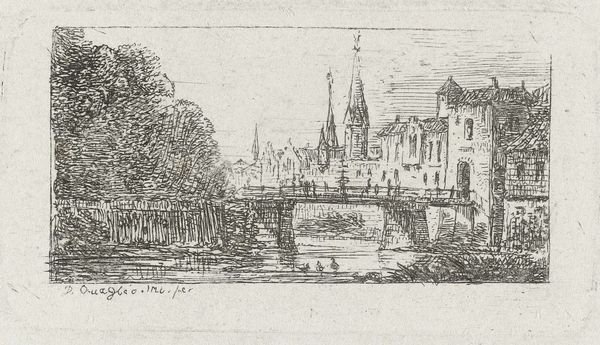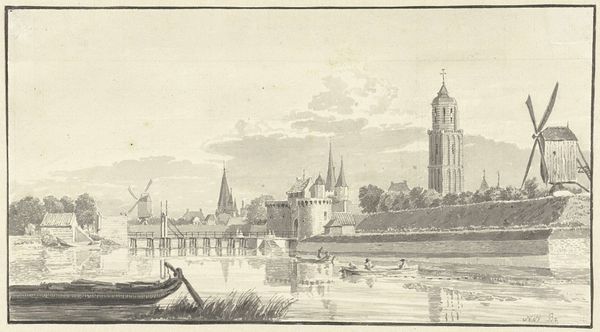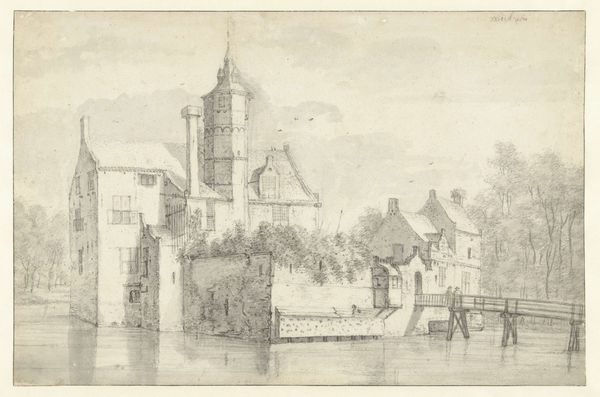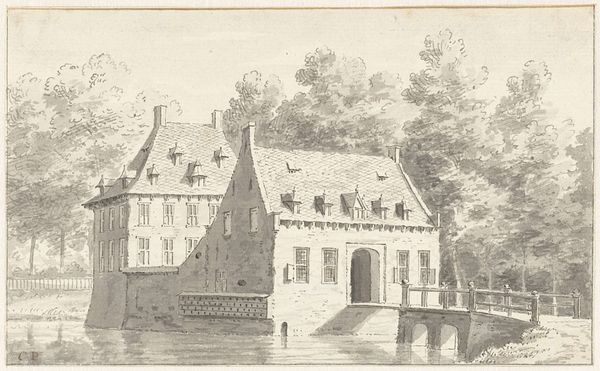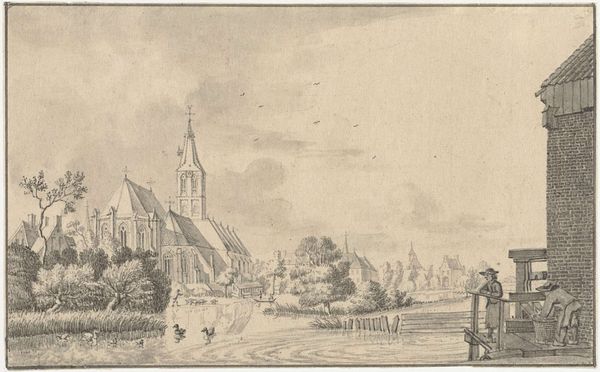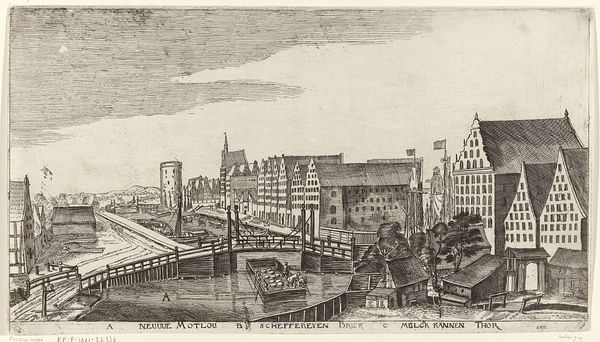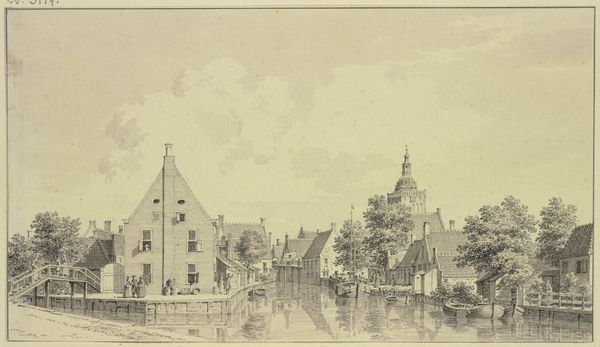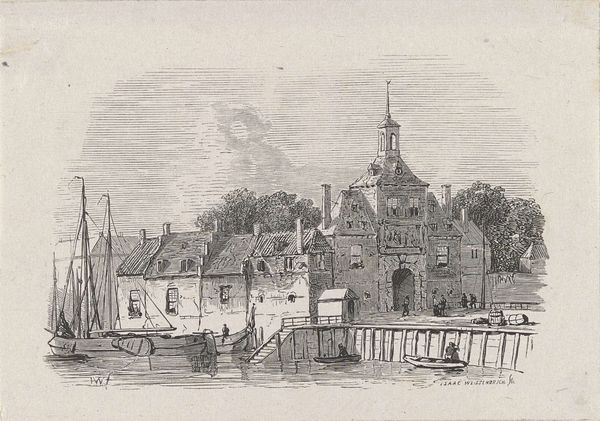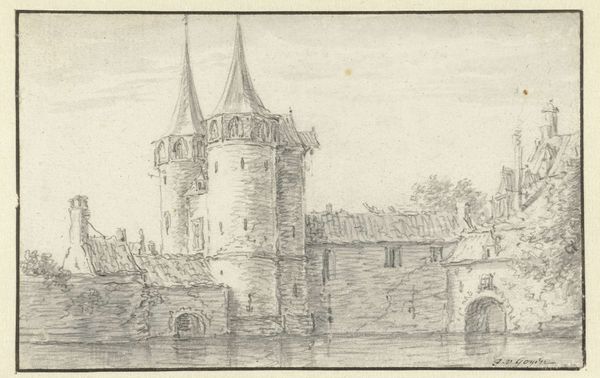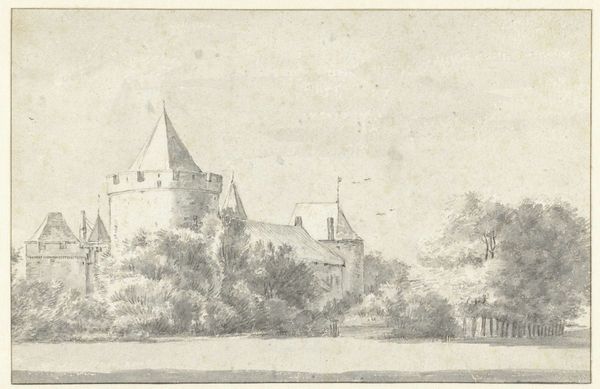
drawing, watercolor, pen, architecture
#
drawing
#
landscape
#
11_renaissance
#
watercolor
#
arch
#
water
#
pen
#
cityscape
#
architecture
Dimensions: 16 x 323 cm
Copyright: Public domain
Editor: This is Albrecht Dürer's "Dry dock at Hallertürlein, Nuremberg," created around 1496 using pen, watercolor, and drawing techniques. The composition strikes me as incredibly detailed, capturing both the imposing architecture and the flowing water. What can you tell me about the context surrounding this piece? Curator: Well, seeing this work through a historical lens, one key aspect is understanding Nuremberg's status in the late 15th century. It was a major center of commerce and humanism, a place of intense intellectual and economic exchange. Dürer, as a native, meticulously documented its urban fabric. This wasn't merely topographical documentation, but also about projecting Nuremberg's self-image. Do you notice anything about how the architecture dominates the composition? Editor: It definitely feels like the buildings have a stronger presence than the natural elements, like the water. Was this intentional? Curator: Precisely! Consider the rising merchant class and civic pride within Nuremberg at the time. Dürer is portraying this powerful urban landscape as a symbol of the city's wealth and importance. He is, in a sense, participating in the construction of Nuremberg's public image, emphasizing its architectural achievements over nature. He omits certain elements and exaggerates others to achieve that objective. Think about how the distribution of prints shaped cultural perceptions of places at this time. Editor: So this image, beyond just depicting a real place, was also involved in shaping how people *saw* that place, both then and perhaps even now? Curator: Exactly. It's crucial to consider how art serves a civic function and how it perpetuates particular viewpoints through carefully selected and crafted imagery. Looking closely, we see how Durer's choice of perspective creates a unique vision, which further contributes to this projection of power. How does that understanding reshape your initial viewing experience? Editor: I see it completely differently now! Knowing the social and historical implications, I understand it’s not just a pretty picture, it's a statement about Nuremberg’s identity. Thank you for highlighting that for me. Curator: It’s fascinating how much history can be packed into a single image. Examining art through the lens of history really opens it up.
Comments
No comments
Be the first to comment and join the conversation on the ultimate creative platform.
